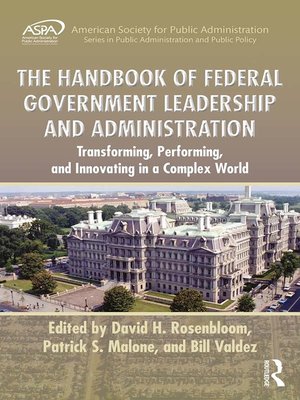The Handbook of Federal Government Leadership and Administration
ebook ∣ Transforming, Performing, and Innovating in a Complex World · ASPA Series in Public Administration and Public Policy
By David H. Rosenbloom

Sign up to save your library
With an OverDrive account, you can save your favorite libraries for at-a-glance information about availability. Find out more about OverDrive accounts.
Find this title in Libby, the library reading app by OverDrive.



Search for a digital library with this title
Title found at these libraries:
| Library Name | Distance |
|---|---|
| Loading... |
Public management is context dependent, rather than generic. That may sound obvious, but in the late 1920s through the 1930s, a dominant strand of thought considered public administration to be a "single process," wherever practiced. Today by contrast, federal administration is distinguished from private enterprise, nonprofit management, and state and local governmental practices by the combined effects of its scope and scale; the constitutional separation of powers, federalism, and protection of individual rights; and administrative law requirements for stakeholder participation, representation, transparency, privacy, due process and other democratic-constitutional values. The Handbook of Federal Leadership and Administration is a state-of-the art guide to the unique features of federal administration, informed by the latest theoretical developments, research, and practical applications, and the leadership and management of federal agencies.
Written by "pracademics" with federal practitioners specifically in mind, the handbook is designed to bridge the gap between academic and applied public administration by identifying what resonates with practitioners as they search for usable theories and research findings to improve performance. Combining rigor and relevance in the study and practice of federal administration, it includes chapters on theory, history, reform initiatives, leadership, necessary skill sets, budgeting, power and influence, political embeddedness, change management, separated and shared executive, legislative, and judicial powers, effective communication, ethics, and emerging concepts and challenges. It will be essential reading for federal practitioners, scholars, and "pracademics" alike.







